The ‘absolutely monumental’ efforts to clean up California’s air
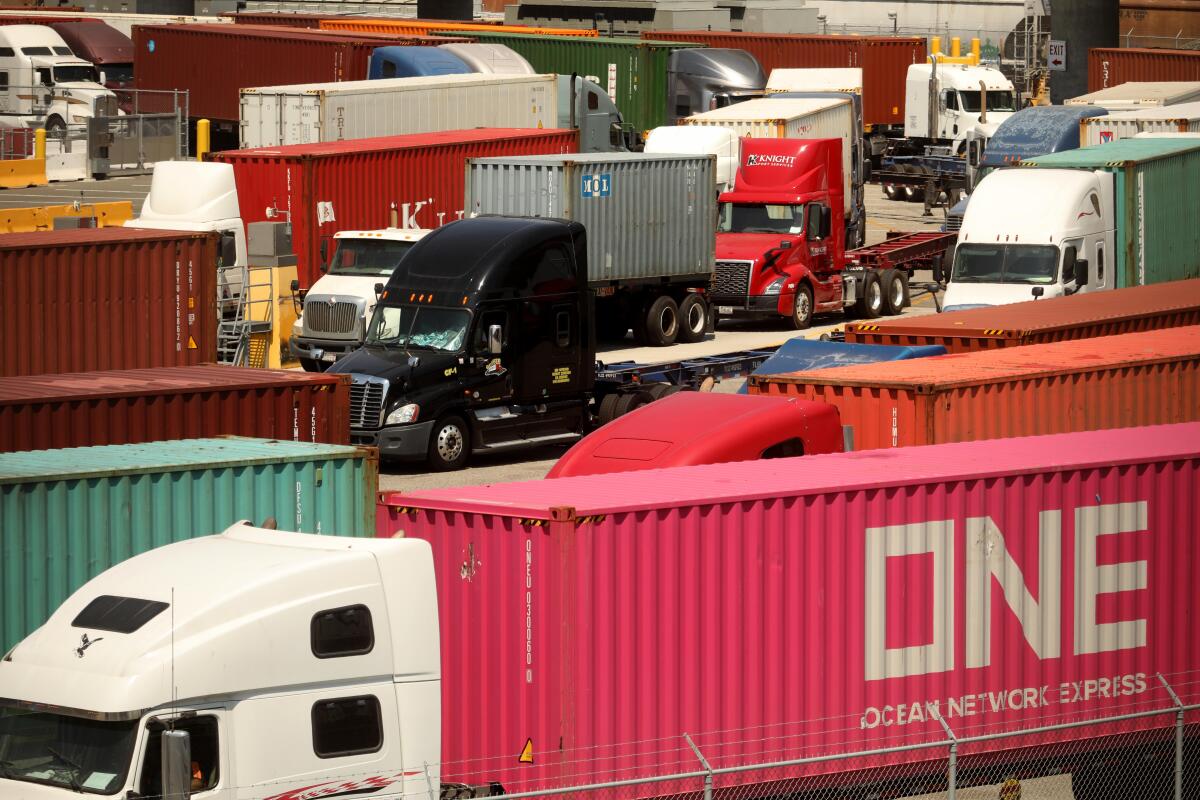
Good morning, and welcome to the Essential California newsletter. It’s Tuesday, May 9.
You may remember when I shared California’s latest air quality report card from the American Lung Assn. In case you haven’t been outside lately, it’s abysmal. The Golden State dominates the list of most polluted regions across the U.S. in terms of ozone and fine particle pollution.
A pair of recent decisions by California regulators aims to address that problem, or part of it. They voted to adopt historic, first-in-the-nation zero-emission requirements that would dramatically improve our air in the coming decades by cutting harmful diesel pollution around rail yards and ports, and along highway corridors.
Over two days in late April the California Air Resources Board approved two landmark sets of rules for diesel-fueled locomotives and medium- and heavy-duty trucks. Here are the basics:
- The In-Use Locomotive Regulation: Regulators set an age limit to retire old locomotives that operate in the state. Rail operators will also be required to pay into a spending account — the amount based on how much pollution their engines create in the state — and will be able to use those funds to upgrade their fleets to cleaner engines (and eventually zero-emission trains).
- Advanced Clean Fleets: The state will accelerate its phase-out of diesel-burning trucks and a phase-in of zero-emission heavy duty vehicles. The new rules are expected to bring more than 1 million new electric freight trucks, school buses and delivery vehicles into operation over the next 25 years. And by 2035, all cargo trucks entering California seaports and rail yards are required to be zero-emission.
“This will be a herculean lift,” my colleague Tony Briscoe wrote late last month, explaining the current reality in smoggy Southern California:
At the ports of Los Angeles and Long Beach, collectively the largest port complex in the nation, more than 20,000 trucks have access to transport freight. Only 72 are electric or battery electric. One is a hydrogen fuel cell truck.
The locomotive rule marks the most substantial pollution reduction effort, projected to eliminate 7,400 tons of fine particulate matter and 386,300 tons of nitrogen oxides (which form smog) by 2050. While truck pollution might be the more visible source of contaminants for many Californians, “operational emissions from just one train are worse than those of 400 heavy-duty trucks,” according to CARB.
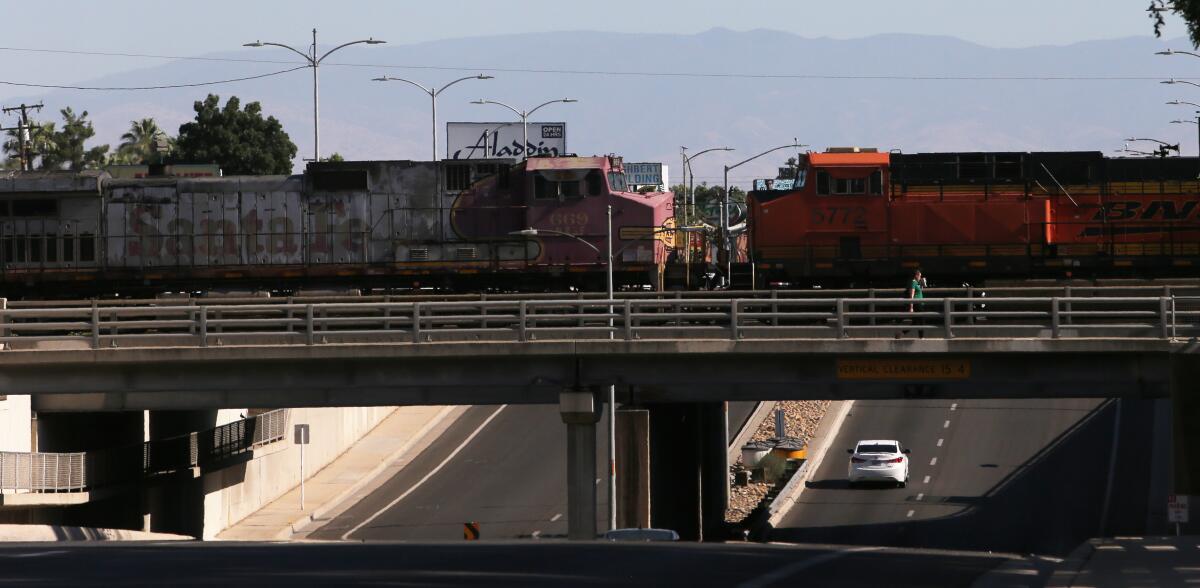
For Yasmine Agelidis, senior associate attorney at the environmental nonprofit Earthjustice, the new framework to curb rail pollution is “absolutely monumental” and a long time coming.
Communities who live near rail yards have been fighting for justice for more than 20 years in California. ... They’ve been demanding that the EPA, that California Air Resources Board, that our local air agencies do something. Finally to see CARB take this really assertive action to say, ‘OK, any rail that operates in the state will need to be zero emissions [and] cannot pollute where people live anymore’ — it’s just been very moving to me.
Agelidis looks forward to a future for Californians in which “it’ll be a thing of the past to see a truck or a train belching a huge cloud of black soot.”
“We’re all very appreciative of California’s leadership,” she said, “and hope that it does serve as a motivator and a guide for EPA to follow suit, and to make sure that every community in the country is not saddled by diesel pollution coming from rail yards down the street [or] up the block.”
Legal battles to come?
California’s long, smog-filled history of awful air is precisely why it’s able to set its own emission standards for motor vehicles (once the federal government gives the OK).
“Even still,” Tony wrote, “the newly approved locomotive rule highlights California’s intention to test the limits of its state authority as emission standards for trains have largely been subject to federal regulation.”
Those limits could be challenged, Agelidis noted, since there’s a very real possibility Pacific Union and other rail or trucking operators might take the state to court over its new rules.
“I hope that neither do get challenged at court, because these are life-saving regulations with technology that’s already available today and just continuing to be developed,” she said. “I really hope that the railroads and other industry doesn’t choose to take that path, but they have sort of suggested that that might be the route.”
Price vs. cost
While those industries point to the considerable price tag of replacing tens of thousands of trucks, buses and trains, air quality regulators and climate justice advocates point to the costs of not making those shifts — which many Californians have long seen, smelled and felt as part of their everyday lives.
Diesel particulate matter has been considered a toxic air contaminant in California for the last 25 years. And despite notable strides in reducing emissions since then, “diesel exhaust still poses substantial risks to public health and the environment,” according to CARB.
Take the Inland Empire, for example, which has the worst smog in the nation. The rise of ecommerce brought a warehouse boom. Big rigs arrived to move all those goods from the L.A. and Long Beach ports, spewing toxic exhaust into the air breathed by many disadvantaged communities along the way. Studies have linked the pollution to asthma, cancer and decreased lung function in children.
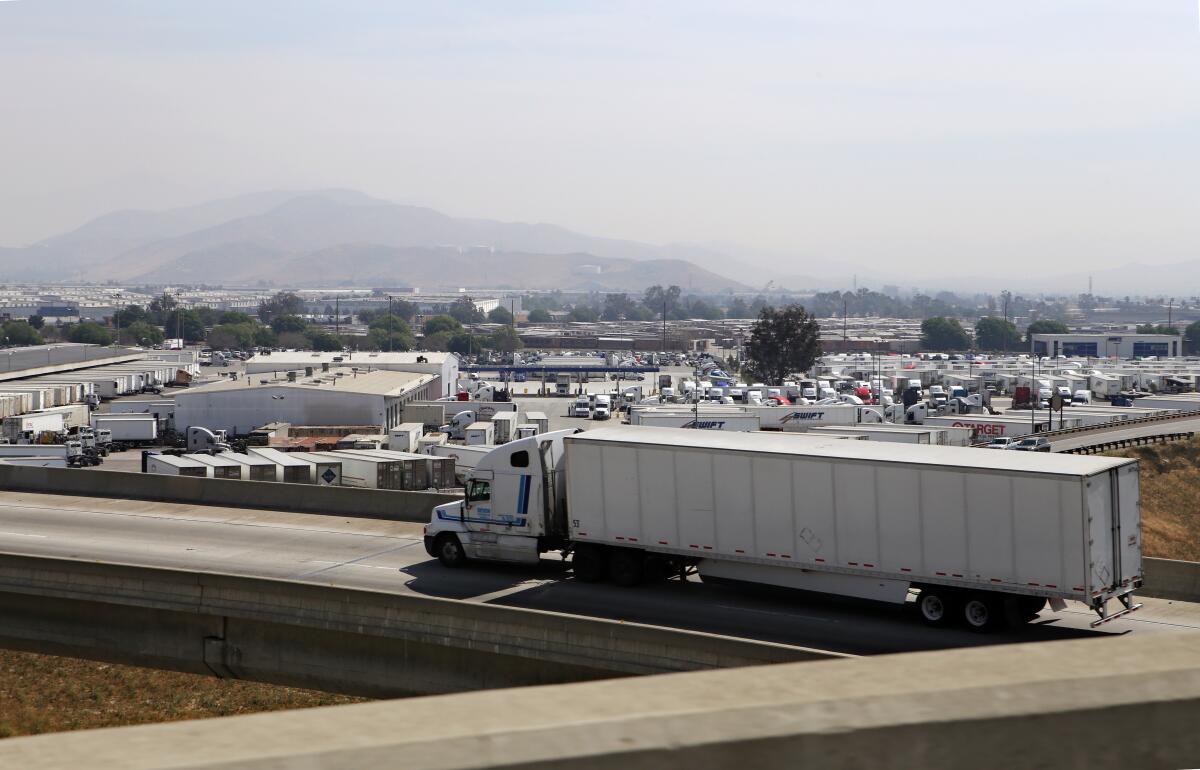
“We know what our air looks like today; we know the health standards that we need to meet; we know we have to do more,” Steven Cliff, CARB’s executive officer, told me. “And that ultimately drives us to zero emissions.”
Cliff said the truck technology is road-ready, with about 150 zero-emission makes and models available in California.
“Our analysis shows that fleets would save almost $50 billion ... in lower operations and maintenance costs over the life of this regulation,” he explained. “That’s in addition to the huge health savings — more than $26 billion ... and thousands of lives saved as a result of enacting these regulations.”
And now, here’s what’s happening across California:
Note: Some of the sites we link to may limit the number of stories you can access without subscribing.
L.A. STORIES
I hope you don’t mind if I toot our own horn for a moment: The L.A. Times won two Pulitzer Prizes on Monday. One went to our staff for breaking news coverage of the secret audio recording of Los Angeles City Council members using crass and racist language while discussing a redistricting scheme. A second award for feature photography went to Christina House for her empathetic portrait of a young woman who lived next to the 101 Freeway as she coped with drug issues and the birth of a child. Los Angeles Times
Los Angeles’ Armenian community is struggling to get aid to relatives in the Artsakh region, where a blockade by Azerbaijan has cut off a vital connection to neighboring Armenia. It’s the latest chapter in a long history of conflict between the two nations. Some local groups and individuals have been writing to Congress, calling for sanctions against Azerbaijan, such as suspending military aid. LAist
POLITICS AND GOVERNMENT
How will the fight in Washington over the debt ceiling affect California’s massive economy? One expert said it’s possible foreign investors could pull their money out of the state should the U.S. default on its debts, though another expert said the U.S. Treasury would almost certainly maneuver to avoid that historic first. The Sacramento Bee
The three top Democrats running for Sen. Dianne Feinstein’s seat next year sat down to make their pitch to California’s powerful labor unions. The California Labor Federation hosted Katie Porter, Adam Schiff and Barbara Lee on Sunday, as they each made their case that they’re the most union-friendly candidate in 2024. Los Angeles Times
Here’s a story ripe for a spit take: Water systems in California and across the U.S. are vulnerable to both physical and cyber attacks. As Times reporter Hayley Smith reports: “Many of the systems ... are still operating with outdated software, poor passwords, aging infrastructure and other weaknesses that could leave them at risk.” Los Angeles Times
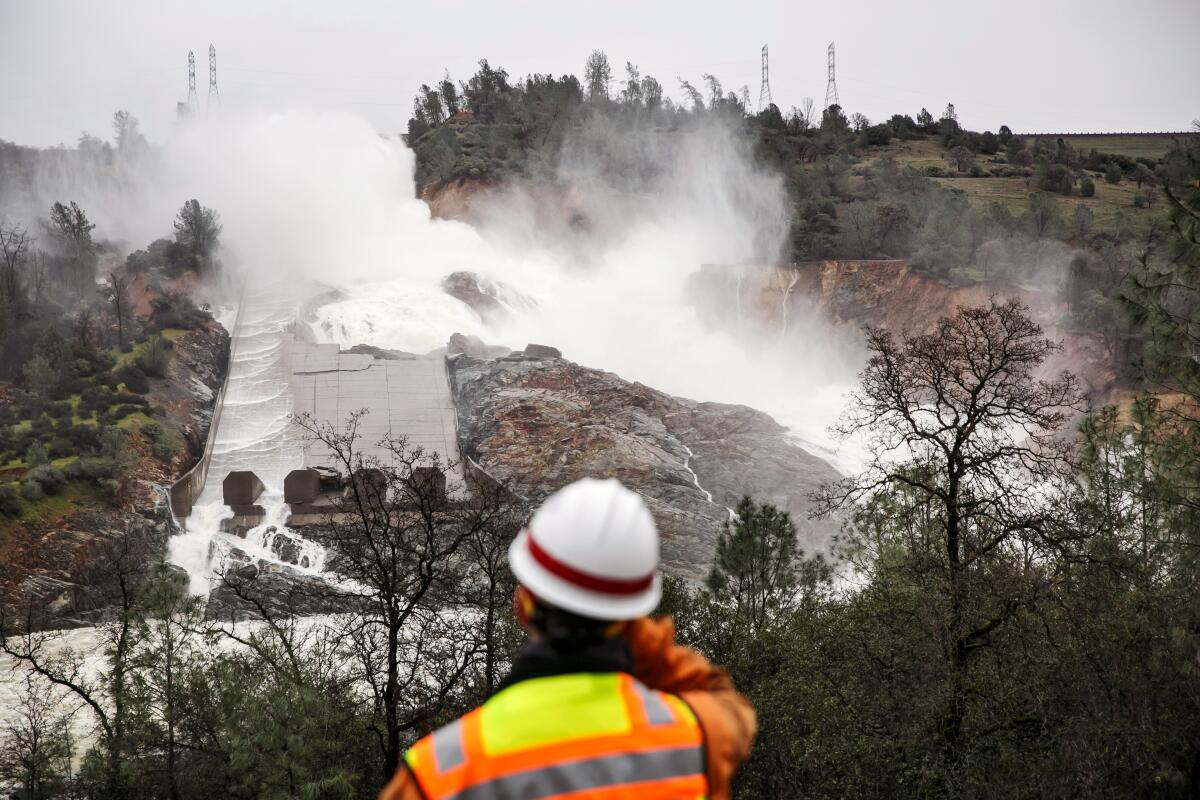
CRIME, COURTS AND POLICING
After two brutal killings on a rural Northern California reservation, tribes are asking state lawmakers for help. Indigenous people, especially women, are murdered and go missing at alarming rates. While the data are incomplete, thousands of cases remain unsolved, prompting new bills in Sacramento to improve public safety on tribal land and invest more state funds in social programs. Los Angeles Times
Facing more than 330 sexual abuse lawsuits, the Roman Catholic Diocese of Oakland filed for bankruptcy Monday. “We believe this process is the best way to ensure a fair and equitable outcome for survivors,” Bishop Michael Barber said in a statement. San Francisco Chronicle
Support our journalism
CALIFORNIA CULTURE
There’s a mystery afloat (technically stuck in the sand) on the San Luis Obispo County coast: a “ghost boat” that washed up at Estero Bluffs. Many rumors swirled about the abandoned vessel, but the truth here is less strange than fiction. San Luis Obispo Tribune
California’s Big Melt is creating big thrills for whitewater rafters. But local authorities are closing some waterways to recreation, concerned about the safety risks in swollen, powerful rivers. The Mercury News
Free online games
Get our free daily crossword puzzle, sudoku, word search and arcade games in our new game center at latimes.com/games.
AND FINALLY
Today’s California landmark is from Trevor Wiggins of Yuba City: Emerald Pools, a popular swimming spot along the Yuba River.
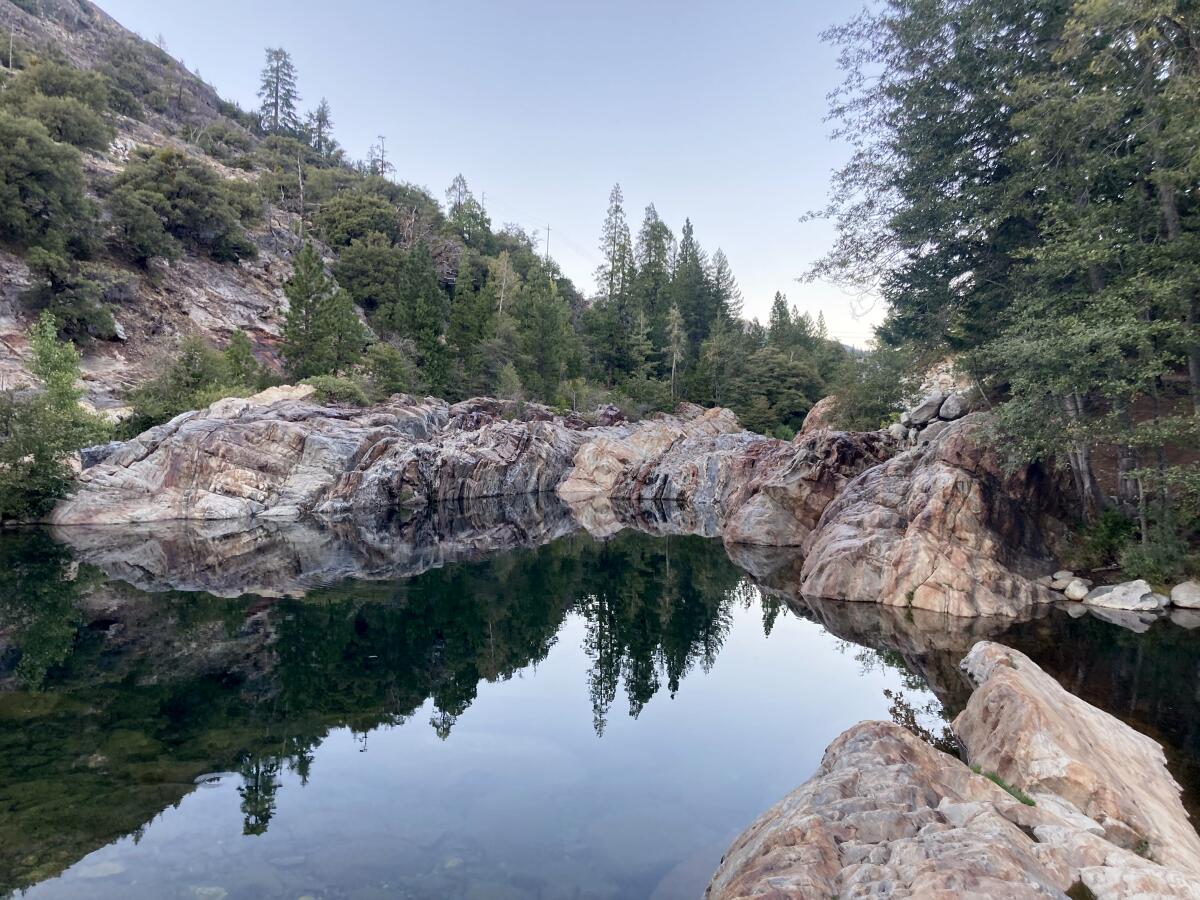
Trevor writes:
It’s so serene and less traveled upon. I took [the photo in] late September when me and my wife went camping for the weekend outside of Nevada City.
What are California’s essential landmarks? Fill out this form to send us your photos of a special spot in California — natural or human-made. Tell us why it’s interesting and what makes it a symbol of life in the Golden State. Please be sure to include only photos taken directly by you. Your submission could be featured in a future edition of the newsletter.
Please let us know what we can do to make this newsletter more useful to you. Send comments to [email protected].
Sign up for Essential California
The most important California stories and recommendations in your inbox every morning.
You may occasionally receive promotional content from the Los Angeles Times.




